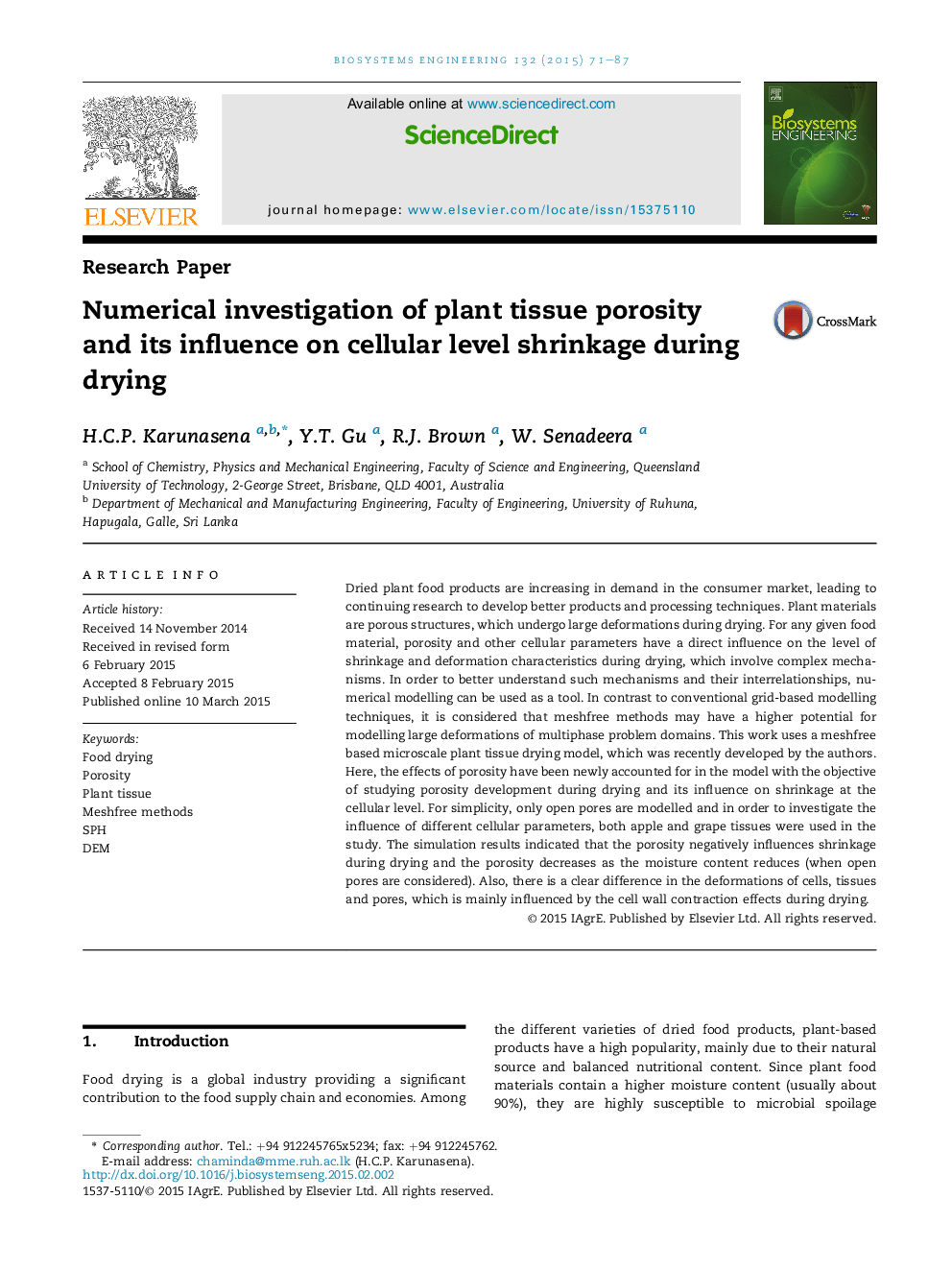| Article ID | Journal | Published Year | Pages | File Type |
|---|---|---|---|---|
| 1710969 | Biosystems Engineering | 2015 | 17 Pages |
Abstract
Dried plant food products are increasing in demand in the consumer market, leading to continuing research to develop better products and processing techniques. Plant materials are porous structures, which undergo large deformations during drying. For any given food material, porosity and other cellular parameters have a direct influence on the level of shrinkage and deformation characteristics during drying, which involve complex mechanisms. In order to better understand such mechanisms and their interrelationships, numerical modelling can be used as a tool. In contrast to conventional grid-based modelling techniques, it is considered that meshfree methods may have a higher potential for modelling large deformations of multiphase problem domains. This work uses a meshfree based microscale plant tissue drying model, which was recently developed by the authors. Here, the effects of porosity have been newly accounted for in the model with the objective of studying porosity development during drying and its influence on shrinkage at the cellular level. For simplicity, only open pores are modelled and in order to investigate the influence of different cellular parameters, both apple and grape tissues were used in the study. The simulation results indicated that the porosity negatively influences shrinkage during drying and the porosity decreases as the moisture content reduces (when open pores are considered). Also, there is a clear difference in the deformations of cells, tissues and pores, which is mainly influenced by the cell wall contraction effects during drying.
Related Topics
Physical Sciences and Engineering
Engineering
Control and Systems Engineering
Authors
H.C.P. Karunasena, Y.T. Gu, R.J. Brown, W. Senadeera,
